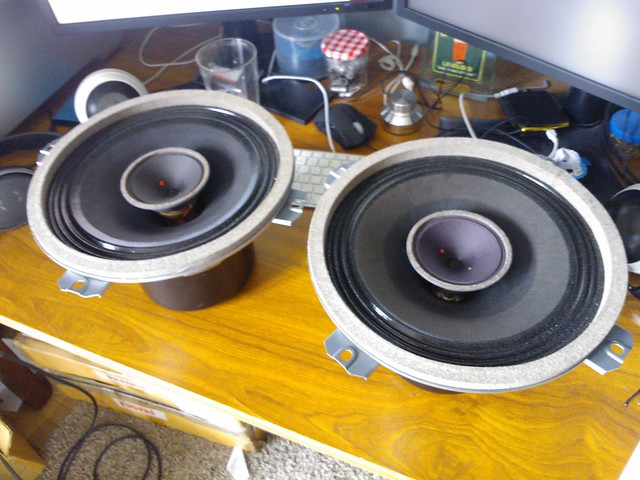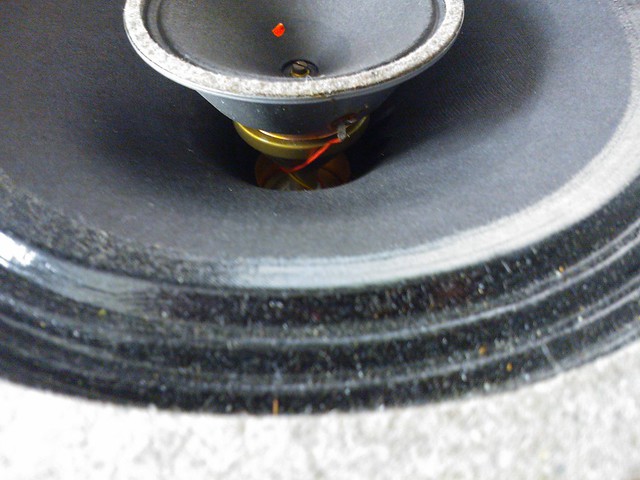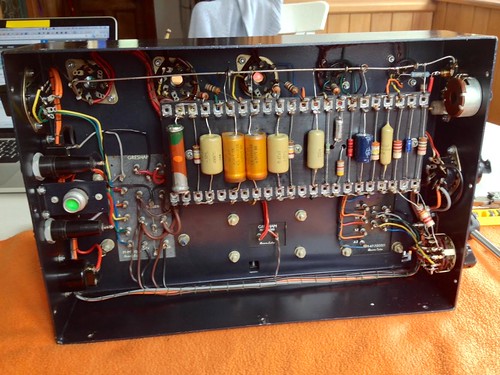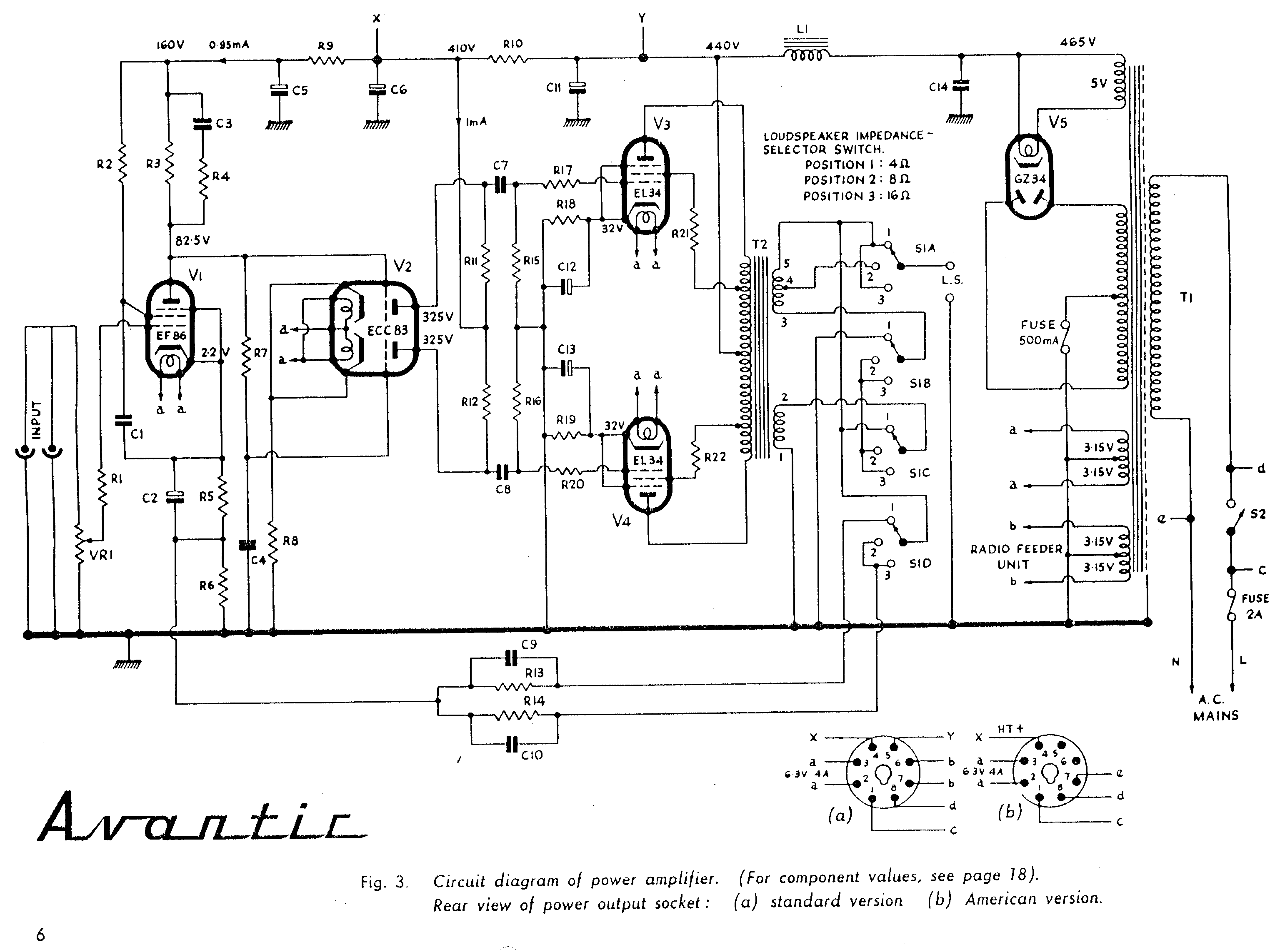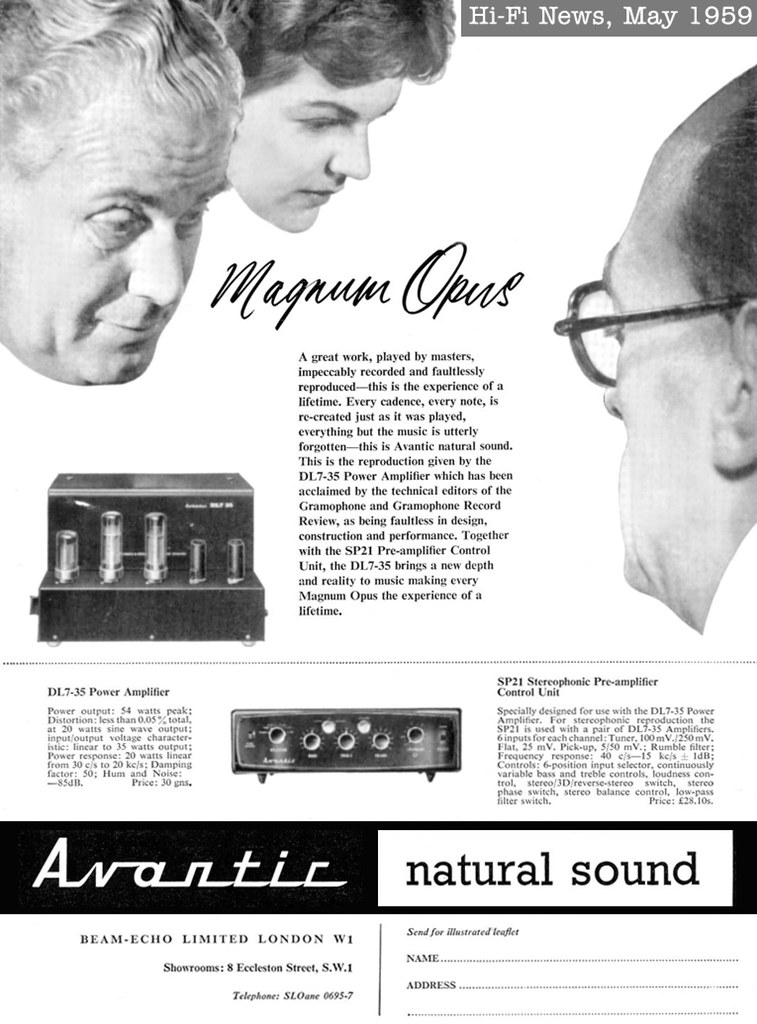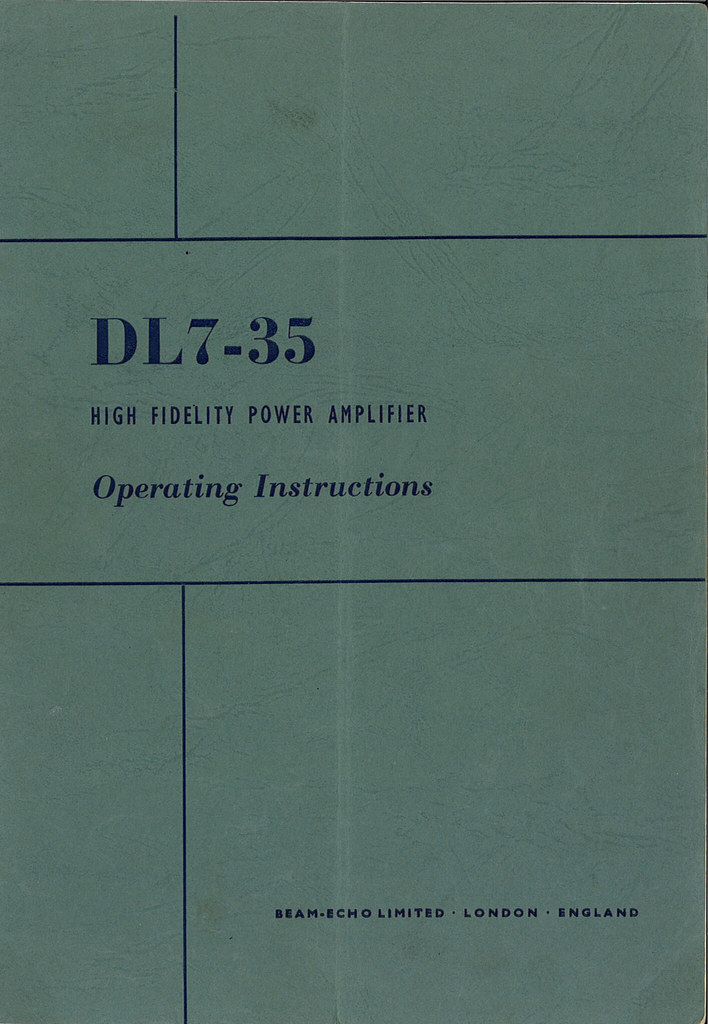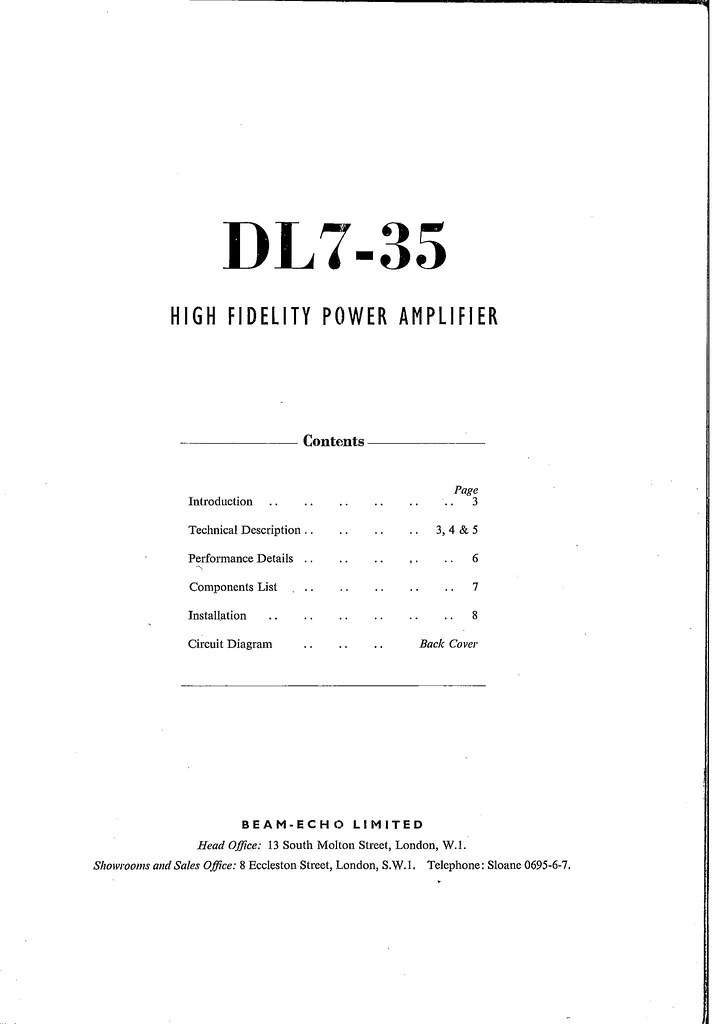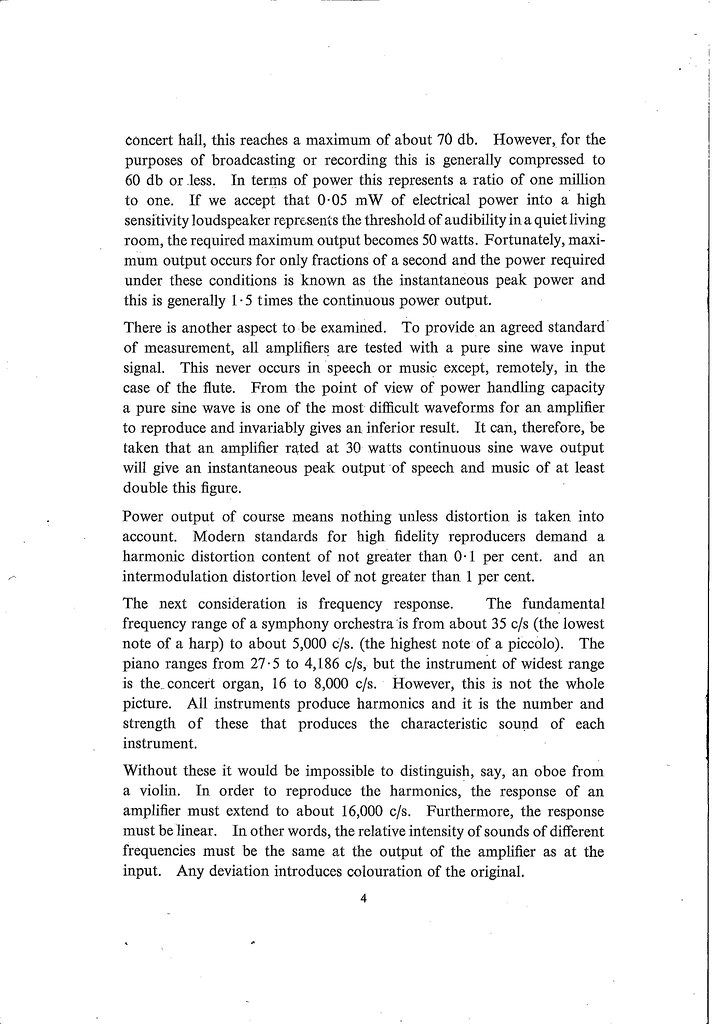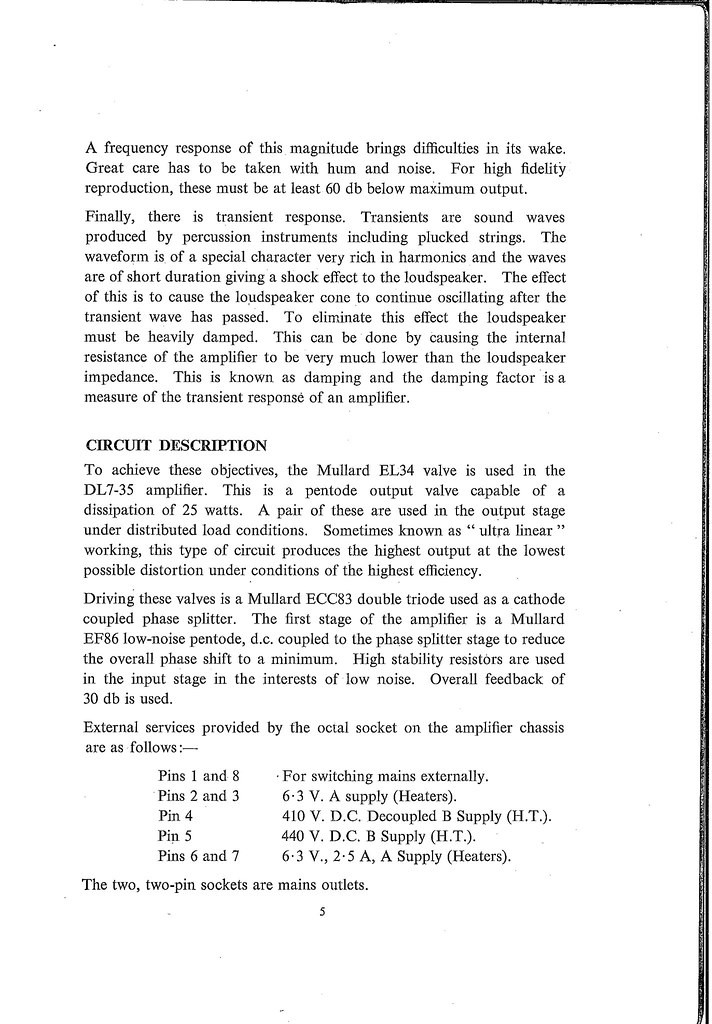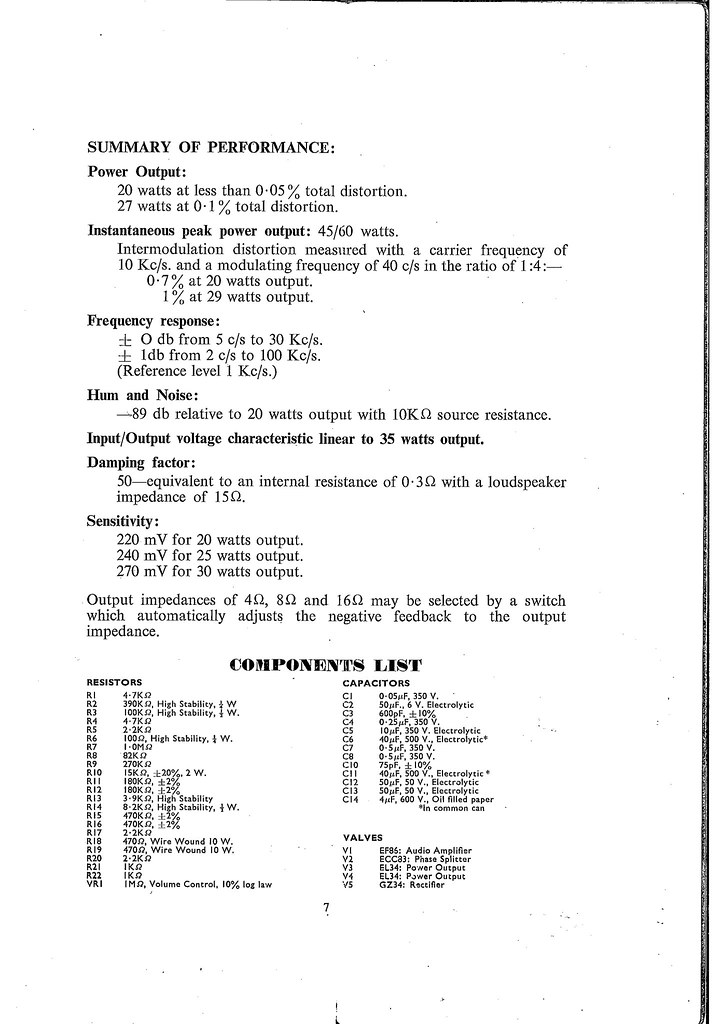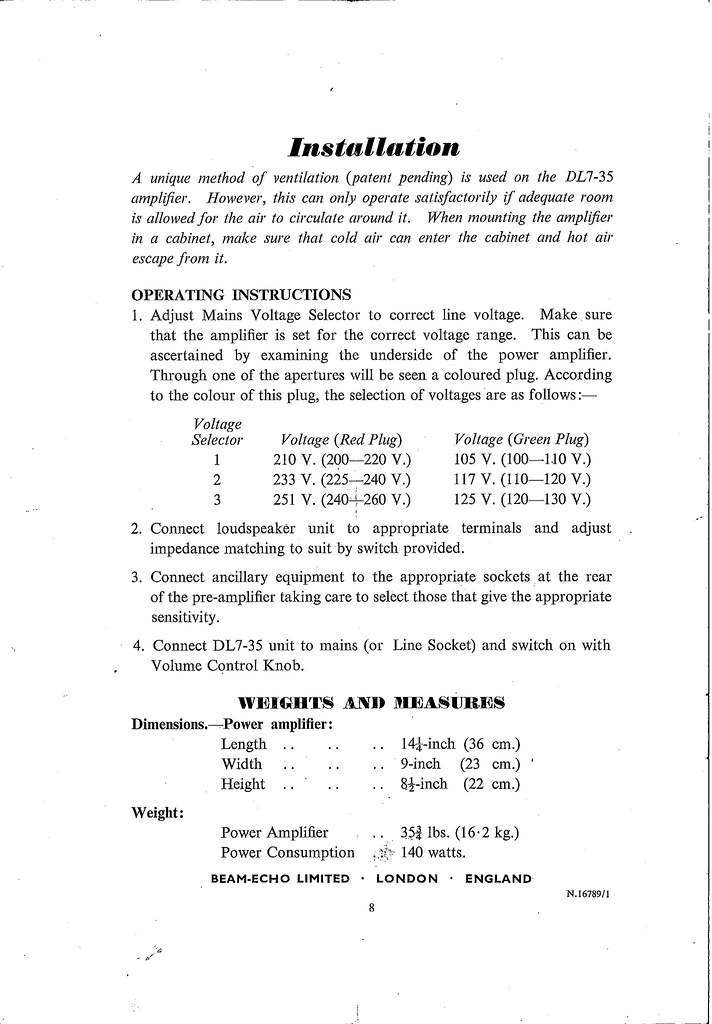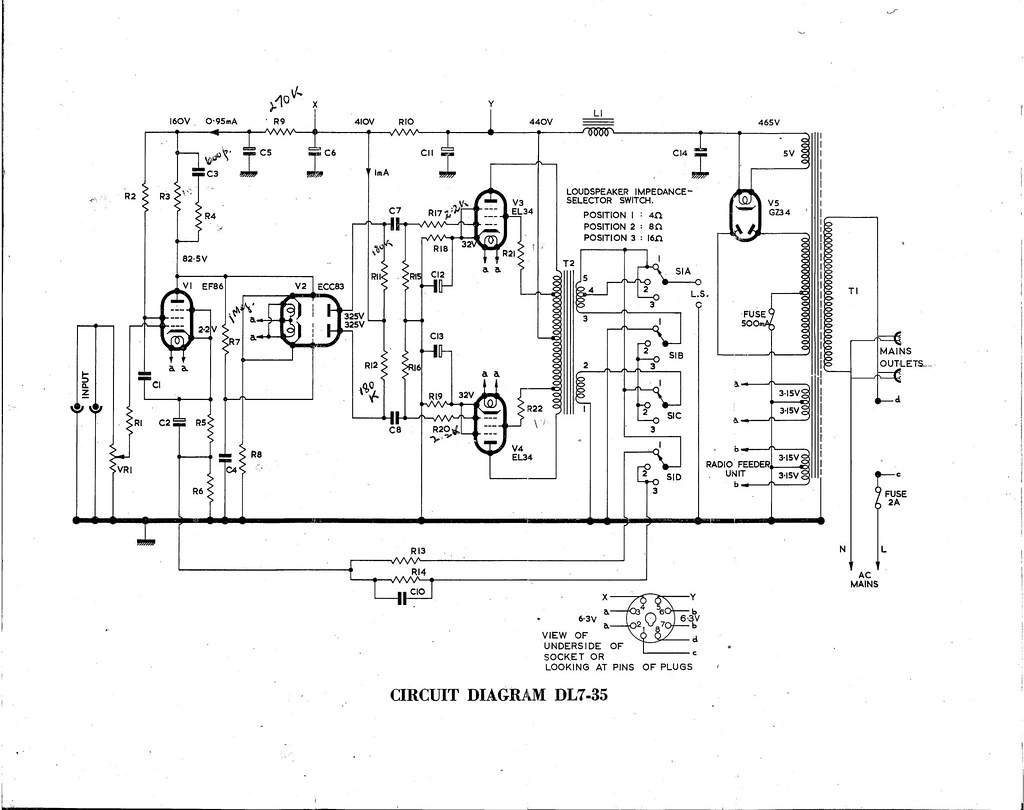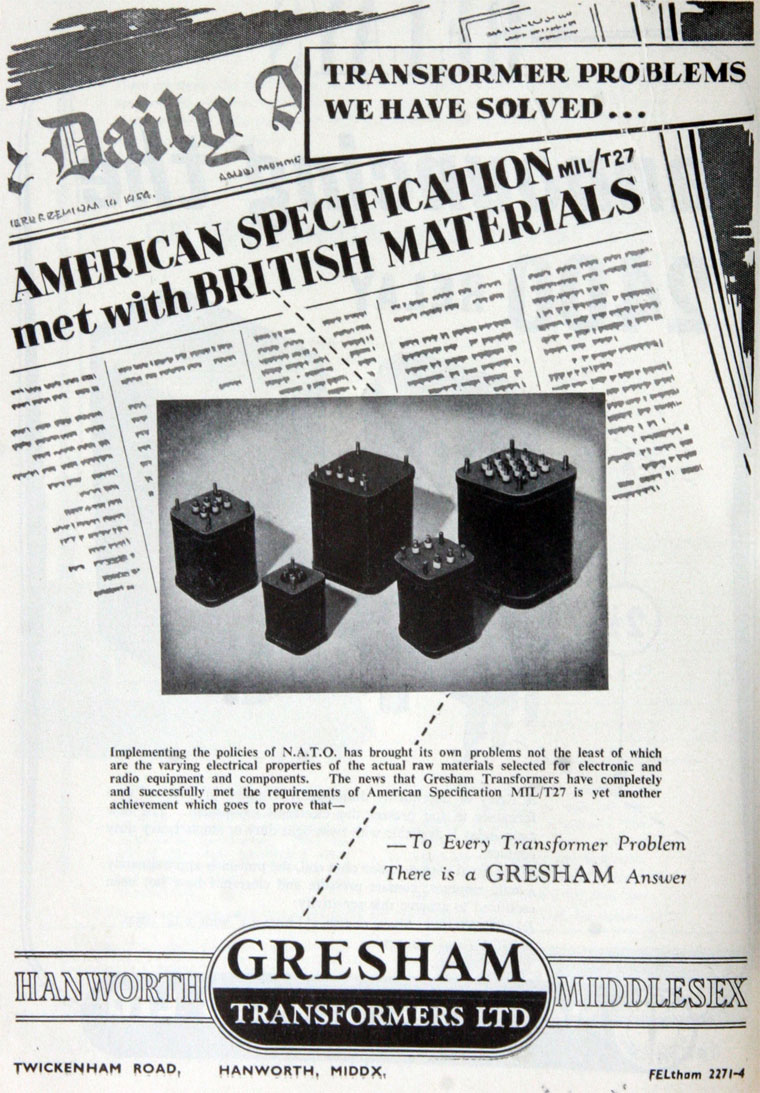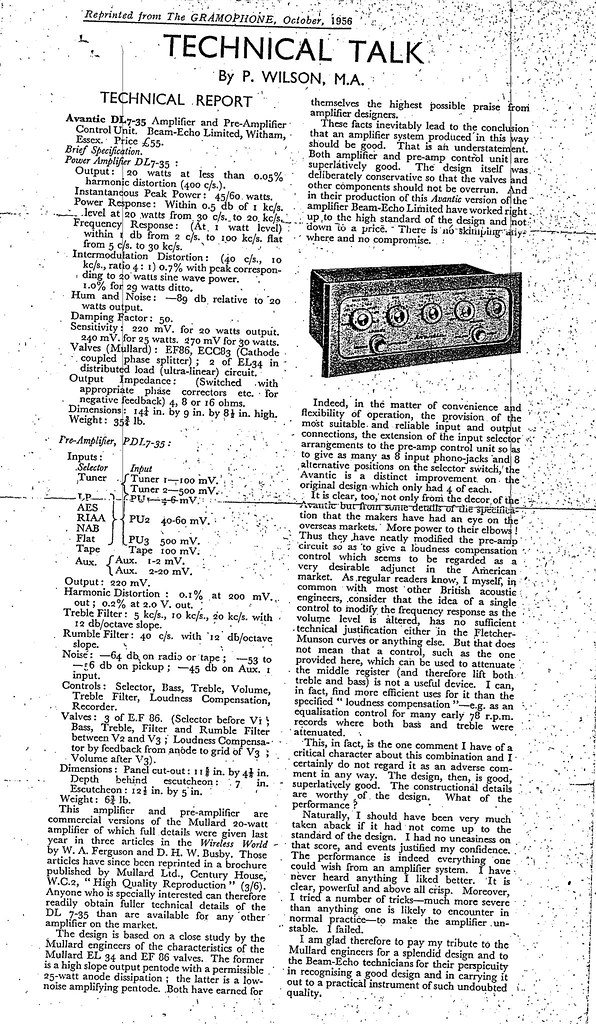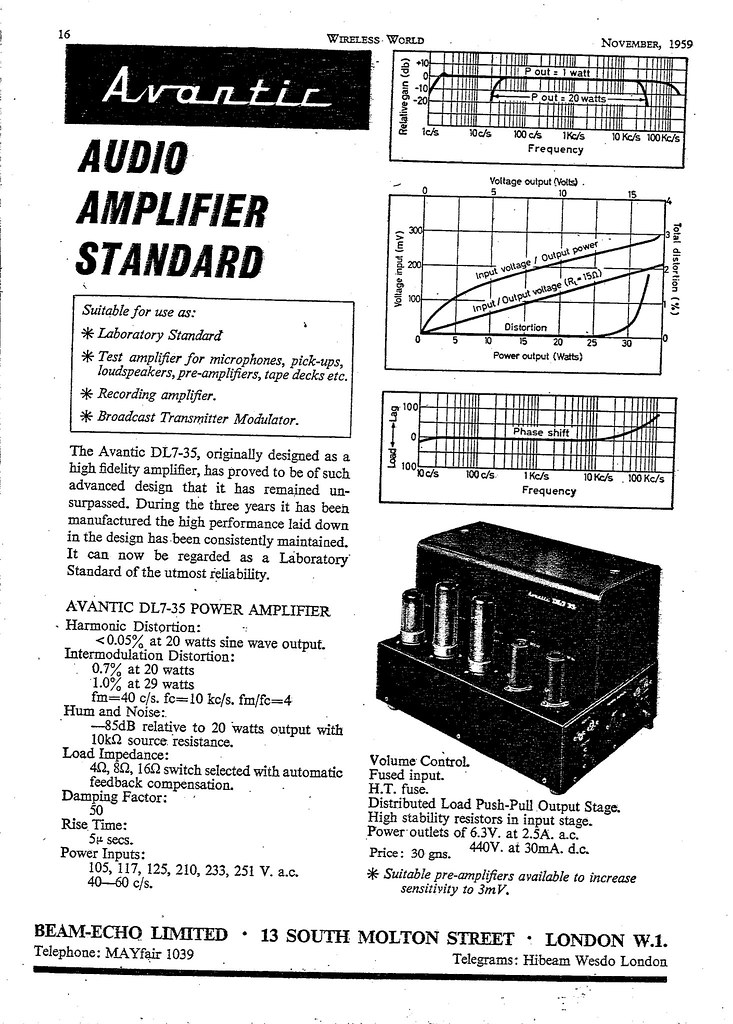And here are some comments from Russ57, made on the AA, when I first started enquiring about getting the amps serviced, last year. You may find this interesting as a commentary on the maintenance of a Mullard 5-20 amp:
"The power supply transformer takes your wall voltage and "transforms" it to the various voltages required. It does this by the ratio of turns of insulated wire. If there was a fault in the transformer you could have anything from wrong voltages to excessive power draw....to smoke/fire. The best you can do is remove all tubes and compare voltages on all windings between the two amps. I'd want to see them under 10% and the closer the better.
The transformer sends AC voltage to the GZ34. The GZ34 turns that into DC voltage with "AC ripple voltage" imposed on it. We want to get rid of the ripple voltage. The capacitors (C14,11,6, and 5) perform this function (and other functions). We call them filter caps (but some are also decoupling caps). C14 should have a low impedance (name for AC resistance which involes a few parameters) path to ground for the AC ripple voltage but no connection to ground for the DC voltage. The larger the size of C14, the lower the impedance to ground at a given hertz. The use of a tube rectifier limits it size though. If C14 passed DC voltage to ground we would call it "leaky".
If C14 was leaky, and passing DC voltage ground, we would have a few symptoms, depending on how leaky it was. If minor, DC voltage would be low. If it leaked a little more power transformer might be warmer then normal, GZ34 life might be lower. If higher yet we might blow fuses. If C14 was warmer then normal, or the case distorted in shape, those would be warning signs.
If C14's impedance to ground had raised, due to age and such, ripple voltage would be higher than normal. An Oscope is the best way to see but some digital multi-meters can measure AC, DC, and hertz all at the same time. Make sure, because a lot of them can't, and I'd hate to see you get hurt.
C14 also controls "conduction angle" of the GZ34. If there was no C14, and L1 was big enough in relation to the load to meet "critical inductance", then the GZ34 would conduct for the entire sine wave (first one plate for half of it then the other plate for the other half of the transformer winding). DC voltage would be around 0.9 times the AC voltage from power transformer. You do have a C14 so the GZ34 only conducts for a part of the sine wave. The bigger C14 the smaller the conduction angle (time). DC voltage would be upwards of 1.4 times the AC voltage (neglecting GZ34 voltage loss which is a few tens of volts).
Given that the GZ34 only conducts for a brief period it passes a high current spike to C14 (and this causes problems). C14 must be charged with enough power (joules) to power the amp for the remainder of the sine wave during which the GZ34 is turned off. 4uF strikes me as rather small for that job given EL34 output tubes. There seems to be notes to the efect that C14 is dual case so it might actually be 8uF in total.
Next, after C14, DC goes to L1, a choke. The choke has a low resistance path to DC voltage so it lets it go right through. It has a high impedance to AC which is a function of size (henry) and hertz. It is also an energy storage device. Suffice to say it is there to reduce ripple voltage also.
Now we send DC voltage to output transformers. Because it is a push pull amp we don't need the same degree of ripple reduction that we would for a SET amp. Still I'd wish to see under a volt.
Then we go on the C11 and R10. This reduces the ripple voltage even more and adds some more energy storage to feed the ECC83 tube. As the ECC83 sees an audio signal its current goes up and down. This creates an AC voltage which is passed on through C7 and C8 to the EL34's. Some of this signal voltage is seen by C11/R10/C6 and they are the return path to ground for it. It that way they "decouple" this from the rest of the amp's circuit. Pretty much same thing for R9/C5 which feed the EF86.
So, to recap, these parts are there to:
a) reduce ripple voltage
b) to provide energy storage
c) to provide a return path for signal created voltages and decouple one stage from another
In regards to "balance" between amps I rate the following as most important:
a) matching of cathode bias resistors and plate load resistors
b) matching of tubes
c) matching of all other resistors
d) matching of coupling caps (C7 and C8)
e) matching of the power supply/decoulping caps is of little importance
Some general notes:
a) Many parts have improved greatly over the years. This is especially true of capacitors. Any electrolytic cap over ten years of age should be replaced with a 105C rated part.
b) Some parts have not improved. Vintage tubes and transformers are often superior.
c) Vinatge audio owners often fall in love with the sound of old out of tolerance/poor quality parts. When amps are "made better" with new parts they may feel "the vintage sound" has been lost and their amp is ruined. This is, of course, utter nonsense but be forewarned."



